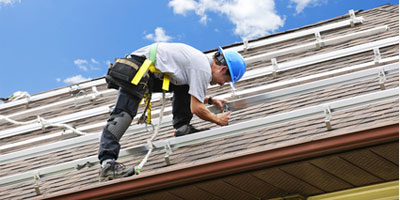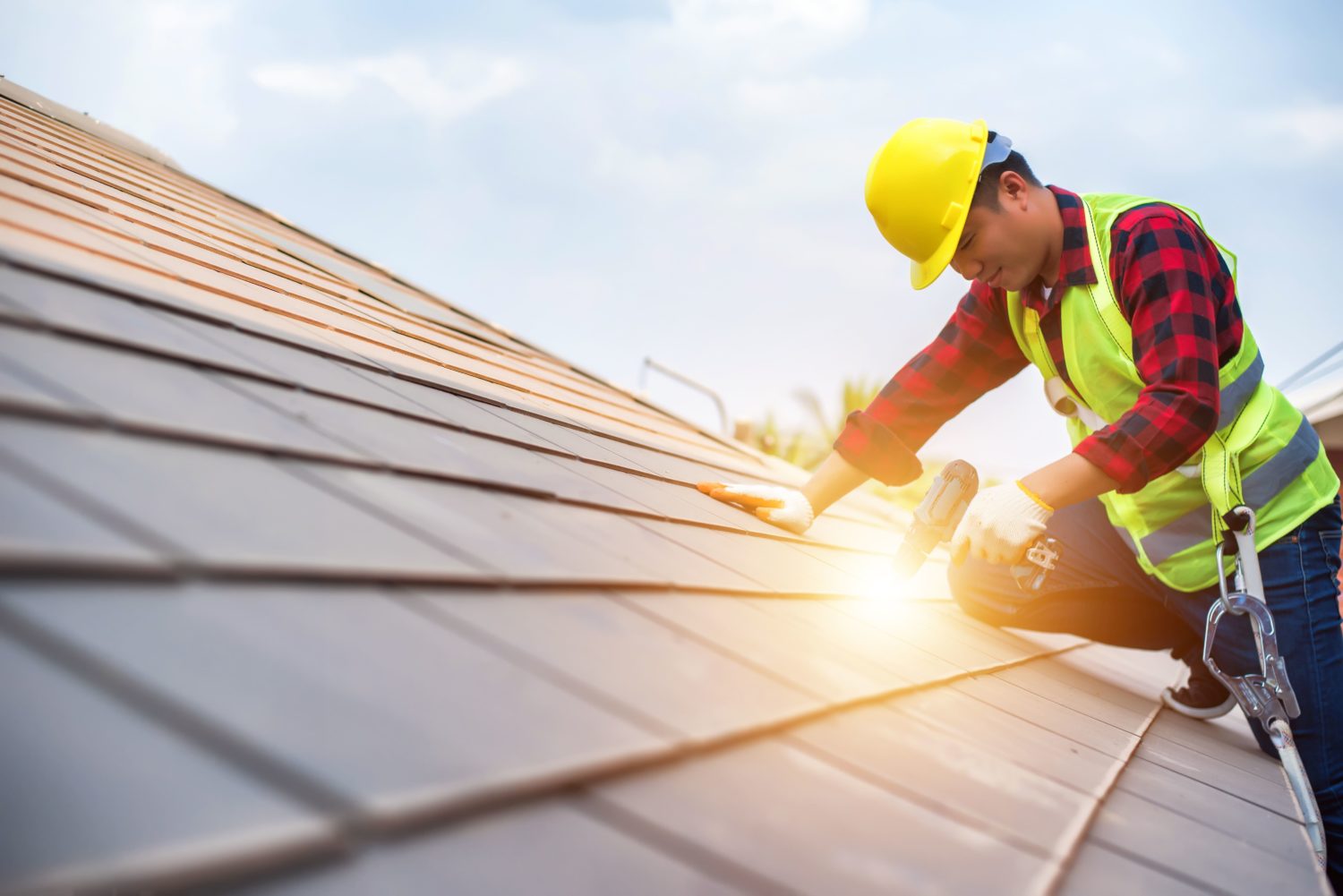Roof Replacement Novi: What Every Homeowner Should Know About Leak Prevention
How Climate Problems Can Effect Your Roofing Longevity
Your roofing deals with constant obstacles from the weather condition, and it's crucial to recognize exactly how these problems can shorten its life-span. UV rays can compromise products, while heavy rainfall may cause leaks. Snow and ice put included tension on the framework, and temperature modifications create susceptabilities. Each element contributes in your roof covering's longevity, but exactly how can you effectively get ready for these threats? The responses could surprise you.
The Impacts of UV Rays on Roof Products
When your roof covering is revealed to sunshine, those unsafe rays can create significant damage over time. This destruction compromises your roofing system and makes it less effective at shielding your home.
You can reduce these effects by choosing UV-resistant roofing products or applying protective coverings. Regular inspections additionally assist catch early indicators of damages, enabling you to attend to issues prior to they rise. Furthermore, think about setting up reflective roofing choices that can deflect UV rays and keep your home colder. By staying aggressive regarding UV exposure, you'll expand the life of your roof covering and improve your home's overall resilience. Taking these actions now can conserve you money and stress later.
How Extreme Rain Can Cause Roof Damages
While UV rays can weaken your roofing, extreme rainfall postures one more significant hazard to its stability. When heavy rainfalls happen, water can merge on your roofing, resulting in potential leakages and structural damages over time. If your roof covering materials aren't designed to manage prolonged direct exposure to moisture, they can wear away faster than anticipated.
Clogged rain gutters can intensify these concerns, causing water to overflow and seep into your home. You might discover discolorations on your ceilings or walls, indicating that water is locating its method inside. Furthermore, standing water can advertise mold development, which not only harms your roofing system but can likewise impact your indoor air high quality.
To secure your roofing, validate your water drainage systems are clear and operating effectively. Normal inspections can help you identify weak spots prior to they develop into pricey repair services, maintaining your roof covering healthy also throughout hefty rains.
The Effect of Snow and Ice Build-up
When snow and ice load up on your roof covering, you could not understand the anxiety it puts on the structure. That included weight can bring about severe problems like roofing sagging or perhaps collapse. And also, ice dam development can trap water, triggering leaks and additional damage to your home.
Snow Load Tension
As winter season blankets your home in snow, the weight of built up ice and snow can place substantial stress and anxiety on your roof covering. When snow develops, it can go beyond the load-bearing capability of your roofing materials, leading to potential sagging or also collapse. You may not recognize how quickly snow can gather, specifically during heavy tornados, so it's vital to watch on the weight your roofing system is supporting. Frequently clearing snow can assist reduce this stress and anxiety, minimizing the risk of long-lasting damage. In addition, comprehending your roof covering's structure and its snow load score can inform you regarding when to do something about it. Bear in mind, prevention is vital to preserving your roof's honesty and durability during the winter season.
Ice Dam Development
Ice dam development can become a considerable concern throughout winter, especially when snow builds up on your roofing and temperature levels rise and fall. When warmth escapes from your home, it melts the snow on your roofing system, triggering water to stream down. As this water gets to the colder eaves, it freezes, developing a dam that prevents further drainage. Gradually, this trapped water can leak under roof shingles, causing leakages and substantial damage to your roof framework. To avoid ice dams, ensure your attic is correctly protected and aerated. You need to additionally consistently remove snow buildup from your roof. By taking these safety measures, you'll help extend your roofing system's life expectancy and prevent costly repair work brought on by ice dam problems.
Temperature Changes and Their Role in Roofing System Damage
Temperature level fluctuations can seriously impact your roofing system's lifespan. As materials broaden and contract with cold and heat, they end up being more at risk to cracks and damage. Furthermore, freeze-thaw cycles can exacerbate these issues, resulting in further wear and tear over time.
Thermal Expansion Results
When temperature levels change, your roofing system can undergo pop over to this site significant thermal development and contraction, which may lead to worldly stress and anxiety and deterioration over time. As the sunlight warms your roofing system during the day, products expand; when temperature levels drop during the night, they acquire. This constant cycle can create weak places, specifically at joints and seams. You might notice cracks, bending, or loosened tiles consequently. These issues can lead to leaks and expensive repair services if left uncontrolled. To mitigate damage, consider using roof products made to hold up against these temperature changes. Routine assessments can additionally aid you capture very early signs of wear, ensuring your roofing system continues to be long lasting and effective in safeguarding your home.
Freeze-Thaw Cycles
As winter collections in, the freeze-thaw cycles can inflict havoc on your roof. official statement As it freezes, it increases, placing tremendous pressure on your roofing products.
Ignoring these problems can lead to even more significant troubles, including leakages and structural damage. To secure your roof covering, it's important to examine it consistently, particularly after severe climate. Dealing with minor issues without delay can assist extend the life of your roofing, ensuring it holds up against the extreme effects of freeze-thaw cycles throughout wintertime.
Humidity Degrees and Their Result on Roof Integrity
While many individuals concentrate on temperature fluctuations, humidity levels play a crucial role in identifying the stability of your roofing. High moisture can develop a damp environment that encourages mold, algae, and mildew growth, all of which can deteriorate roof covering products with time. If your roof covering's air flow isn't ample, dampness can obtain entraped, bring about timber rot and various other architectural problems.
Alternatively, reduced moisture can bring about completely dry problems, creating products like tiles to come to be weak and split. This brittleness can make them more vulnerable to damage from other weather condition aspects.
To preserve your roofing system's stability, it is very important to keep track of moisture degrees and assure correct ventilation. Regular examinations and upkeep can help identify prospective problems before they come to be considerable issues. Keeping your roof covering in great condition means being aggressive concerning moisture effects, ultimately lengthening its life expectancy and safeguarding your home.
Wind Damage: A Silent Threat to Your Roof
Moisture isn't the only climate element to contemplate; wind damages can quietly threaten your roof covering's honesty. Strong winds can lift shingles, loosen blinking, and even detach entire areas of your roof covering. You might not discover these problems promptly, but gradually, they can bring about considerable leakages and architectural damages.
If you live in an area vulnerable to high winds, it's essential to maintain an eye on your roof after storms. Check for any kind of missing out on or damaged shingles and inspect the sides where the roof covering meets other surfaces. Siding Contractor. Focus on any kind of debris that may have gathered, as this can catch dampness and worsen damage
Neglecting these signs might save you time currently, yet it could cost you a lot more in the future. A proactive strategy to wind damages can help ensure your roof covering continues to be secure and strong, prolonging its lifespan and safeguarding your home.
Preparing Your Roofing System for Extreme Weather Events
When preparing your roof for extreme weather this events, it's crucial to assess its current problem and make essential upgrades. Beginning by evaluating for missing out on or damaged shingles, as these can result in leaks throughout hefty rainfall or snow. Replace any compromised products to assure a strong foundation.
Next, examine the blinking around vents, skylights, and chimneys. Effectively secured flashing avoids water from seeping in, which can cause significant damage.
Consider enhancing your roofing's structure, specifically if your location is prone to high winds or hefty snowfall. Setting up impact-resistant roof shingles can add an added layer of defense.
Lastly, clear rain gutters and downspouts to promote proper water drainage. Blocked gutters can lead to ice dams or roof covering leakages. By taking these positive steps, you'll aid prolong your roofing system's lifespan and decrease potential damages throughout severe weather occasions.

Regularly Asked Inquiries
Just how Commonly Should I Examine My Roofing for Weather Condition Damage?

Can I Repair Roofing Damages Created by Weather Myself?
Yes, you can repair roofing damages brought on by weather yourself if you have the right tools and abilities. Simply ensure you prioritize security, analyze the damages thoroughly, and comply with correct fixing techniques to avoid future issues.
What Roof Products Are Ideal for Extreme Climate?
For severe climate, consider metal, slate, or impact-resistant shingles. These materials endure heavy winds, hailstorm, and snow much better than others. You'll ensure your roofing lasts longer, shielding your home from rough components effectively.
How Does Environment Adjustment Affect Roof Covering Durability?
Environment modification increases endure your roof covering, creating products to weaken much faster. Raised temperature levels and serious storms can result in more constant fixings. You'll require to ponder resilient options to guarantee your roof lasts much longer.
Should I Consider a Roofing System Warranty for Weather-Related Issues?
Yes, you should certainly consider a roofing system service warranty for weather-related concerns. It secures you against unforeseen damages, ensuring your investment remains secure. And also, it gives comfort throughout unforeseeable weather.
Just How Excessive Rain Can Lead to Roof Damages
When heavy rainfalls occur, water can merge on your roofing, leading to potential leakages and architectural damage over time.Moisture isn't the only weather condition factor to ponder; wind damage can calmly endanger your roof's honesty. By taking these positive steps, you'll aid prolong your roof's life-span and lessen potential damage throughout extreme climate events.
Can I Fix Roof Damages Caused by Climate Myself?